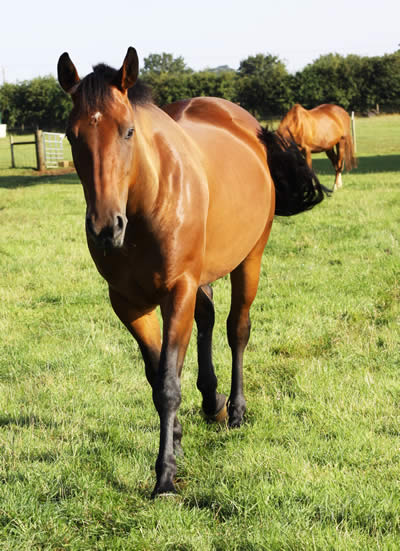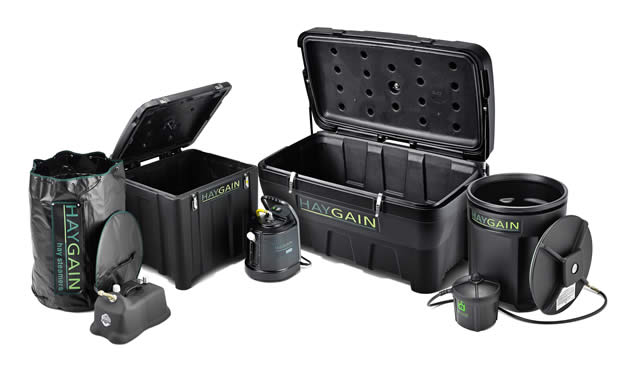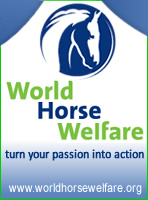Horsey Talk
News. Views. Gossip. Fun.
Something new daily
Horseytalk.net Special Interview
Professor Meriel Moore-Colyer Dean
 The Joys of Spring
The Joys of Spring
Professor Meriel Moore-Colyer is Dean of the School of Equine Management and Science & Principal Lecturer in Equine Science at RAU and Scientific Consultant to HAYGAIN.
Grass laminitis typically occurs in the spring when the early flush of grass produces a highly nutritious feed, rich in water soluble carbohydrates (sugars).
Horses are not designed to consume such rich feed and so restricting the time at pasture or using a grazing muzzle is essential if intakes are to be controlled. However, there are other problems associated with spring grass that need to be considered if health and welfare are to be maintained.
A few hours turn-out onto spring grass can cause swollen legs in some horses, Thoroughbreds seem particularly susceptible. Often the reaction only occurs when grazing certain areas of the field and is generally attributed to a skin or digestive tract provoked allergic reaction. Grazing the same area later-on in the season often bizarrely, does not cause the problem. So if your horse suffered from swollen legs last year, try grazing a different area of the field this spring.
The other problems go hand-in-hand with the rise in temperature and humidity in spring which increases pollen production, and the growth of mould and bacteria. This will increase the concentration of respirable particles (< 5µm in size) in the air which can cause respiratory disorders in horses. While mould spores and lipopolysaccharides (a constituent of gram negative bacteria) are known to cause RAO in horses (Pirie et al., 2003; McGorum et al., 1998; Wichert, et al., 2007), the latter being higher in summer than in winter, others have also identified pollen as one of the potential allergens for susceptible horses (McPherson and Thomas, 1983).
Inflammatory Airway Disease (IAD), often said to be a less severe version of Recurrent Airway Obstruction (RAO) is thought by some veterinarians and researchers to be a reaction to a bacterial infection.
Likewise, Summer Pasture Associated Airway Disorder can be caused by an allergic reaction to organic dust when out at grass. While little can be done about these organisms in the air, prevention of sensitization of the horse by maintaining a low dust regime wherever possible is the best avoidance strategy for all these allergic respiratory disorders.

The warmer – stiller air conditions of spring reduces natural ventilation the stable environment, which can become very dusty. In such a situation owners should take great care to remove the dust from the horse's breathing zone and that means treating the fodder so that respirable particles are kept to a minimum during feeding.
Recent studies by Moore-Colyer and Fillery, (2012) and Taylor and Moore-Colyer (2013) have shown that steaming in a specifically designed HAYGAIN hay steamer HG 600 is the only sure way of reducing respirable particles, mould and bacteria in hay. Partial steaming in home-made steamers or soaking the hay where complete steaming at the necessary high temperatures cannot be achieved only reduced mould by 70% but actually increased bacteria in the fodder. Increasing lipopolysaccharides by stimulating bacteria growth can increase the incidence of RAO (Pirie et al.,2003) which is clearly undesirable.
Spring grass is low in fibre, so even if you are able to keep your horse at pasture it will still need some fibrous fed to maintain a healthy gut. Offering small amounts of properly steamed hay will ensure the provision of hygienically clean palatable roughage thus helping to maintain a healthy digestive tract and respiratory system.
For further information please contact HAYGAIN hay steamers on 0333 200 5233 or www.haygain.com



